This article highlights San Lorenzo and Portobelo, two fortification areas in Panama’s Caribbean Coast (World Heritage Sites).
I am pretty sure you have never heard about the Castillo de San Lorenzo el Real de Chagres (aka Fuerte San Lorenzo) located in the striking country of Panama.
I found about this place while researching my trip to the isthmus two years ago. For some reason, I felt the itch to visit. In reality, the Fort is located in a remote and desolated place.
It is not easy to get there. You even have to cross the Caribbean-side locks of the Panama Canal. I mean your car has to pass over the locks, the area where the ships wait to step up or down. If a ship is crossing, you have to wait until the process is done.
But a few difficulties are not going to stop this history lover. The Fuerte San Lorenzo was built by the Spaniards to protect the mouth of the Chagres River.
The river was extremely important to the conquistadores. The gold from Peru and the silver from Bolivia used to be transported to Panama City. From the city, the treasures were transported by a short trail and then thru the Chagres to the Caribbean Sea. After this, the valuables were embarked to Spain. For these reasons, the vital trade route was guarded from the cliffside fort.


Road leading to Fuerte San Lorenzo. The road is surrounded by rainforest and you can observe coatimundis, agoutis and colorful butterflies.
Today, some may have forgotten about the importance of the fort during colonial times. However, entities like UNESCO have recognized the large number of grand events that have taken place on this site. In 1980, the stronghold and other nearby fortifications were declared World Heritage Sites.
In my opinion, the Fort deserves this distinction and many more. Cruel battles took place here. Pirates and Spaniards shed many blood tears fighting for power and fortune. The most famous attacker was Henry Morgan (yes, he really existed). This guy attacked and destroyed the fort. Then, he used the Chagres to reach Panama City.
He stole all the gold and burned the city (other versions say the city was actually burned by the Spaniards). The fort was rebuilt as a stone stronghold but Admiral Edward Vernon managed to destroy it in 1740. Once again, the place was rebuilt in 1768 and those are the ruins we can observe today. History documents many more confrontations in the area.
In terms of architecture, this is not the most impressive fort I have seen. Nevertheless, architecture is not the only player in this story. We cannot overlook the impressive historical events that probably changed the history of Hispano America and Europe. If you visit Panama, you should consider a visit to this witness of the past.
As mentioned, the San Lorenzo Fort is not the only fortification awarded World Heritage status in the Caribbean side of Panama. The other World Heritage structures are located in the Portobelo Bay near the town bearing the same name. The bay was discovered by Christopher Columbus during his fourth trip.
Years after the discovery, the Spanish monarchy sent military engineers to prepare a plan for the continent’s defense. The engineers chose Portobelo because of its unique topography and harbor conditions. The apogee of the area started with the funding of a town named Nombre de Dios (The Name of God). The town was later moved to present-day Portobelo.
For many years, the town was one of the most important gold and silver transfer points. Because of the importance of the area, a series of fortifications were built around the bay. Most of the individual forts remain today and can be visited.
Most of the pirates, who attacked the San Lorenzo Fort, also attacked Portobelo. Henry Morgan grabbed and destroyed the city before taking the San Lorenzo Fort and continuing to Panama City thru the Chagres River. Additionally, Admiral Edward Vernon seized the city for some time and lost it during the Battle of Cartagena de Indias. As you can see, the town past is full of story and excitement.
If you visit Portobelo, you can also take a look at the Customs House. In here, Spaniards kept track of the gold and silver they were sending to Spain. Today, the place contains some artifacts from the colonization times and offers a short movie explaining the history of the area.
Nowadays, Portobelo is a small town of about 3,000 people. The number of people in town increase dramatically on October 21. Every year pilgrims from all over Panama and other countries arrive in the Black Christ Church and surrounding areas. That day the statue is taken out of the church for a four-hour parade around the community. The Black Christ is highly revered in Panama. Some people walk from Panama City to Portobello as a way to give thanks to the provider of many miracles (according to believers).
Nobody is sure of how this statue arrived in Portobelo. Some say it came on one of the ships from Spain. We do know that the statue is very old (dating from the 1600s).
Another interesting fact about the city is that Francis Drake died of dysentery at sea. He was buried in a lead coffin near the bay. This story ignites all types of legends and mysteries.
In summary, it was interesting to visit an off the beaten path town with a super interesting past. I really felt like I owned the place.
Have you been to a history-rich place like the one featured here? If so, let me know in the comments section.

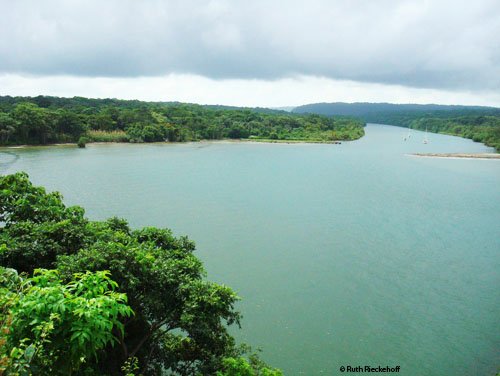
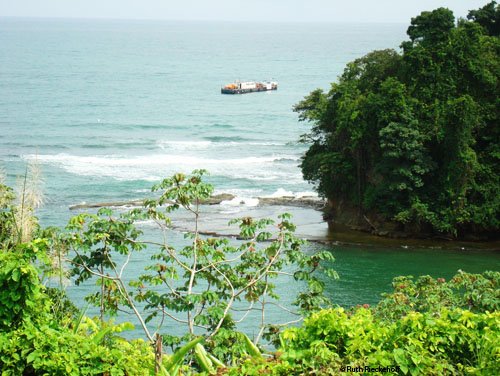



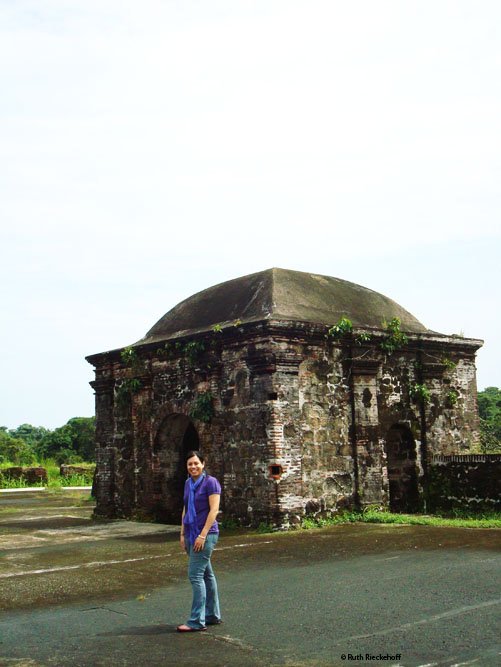
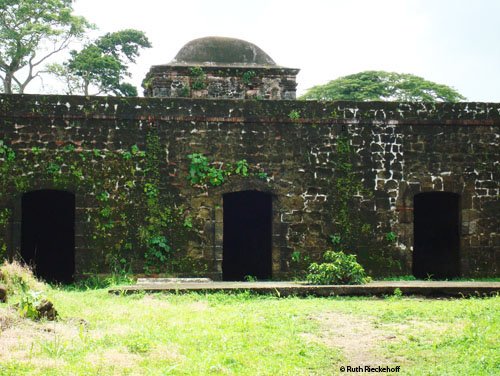
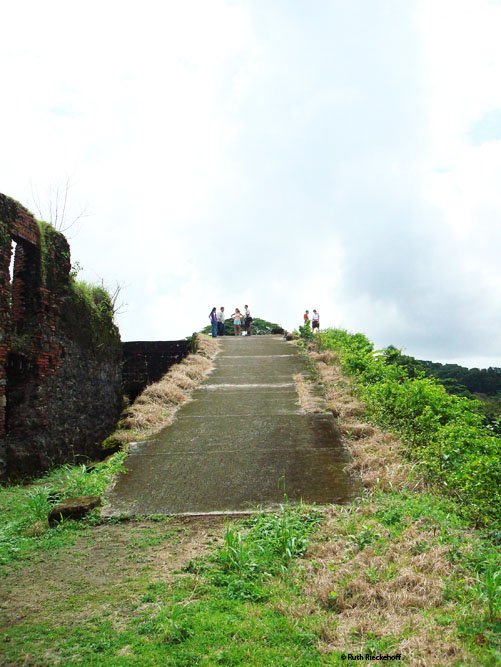

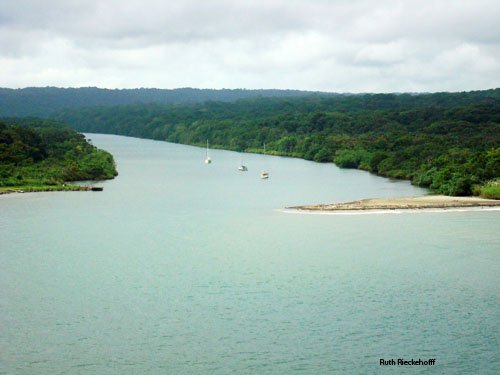


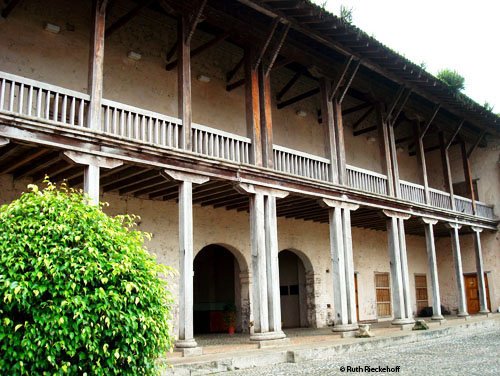
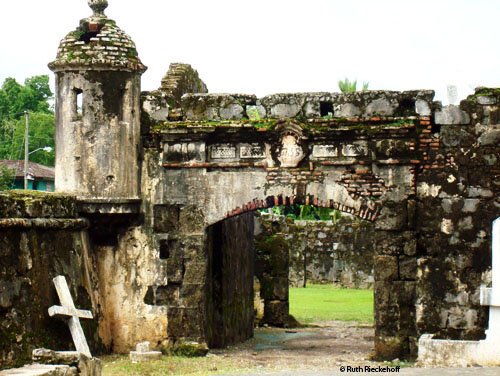

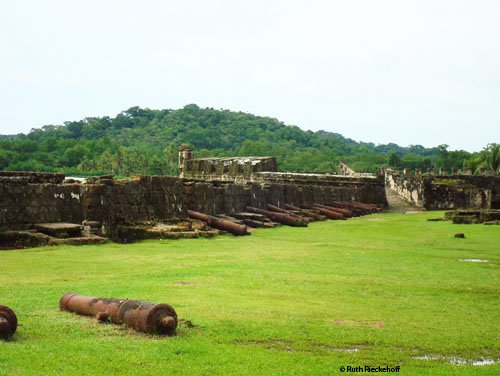



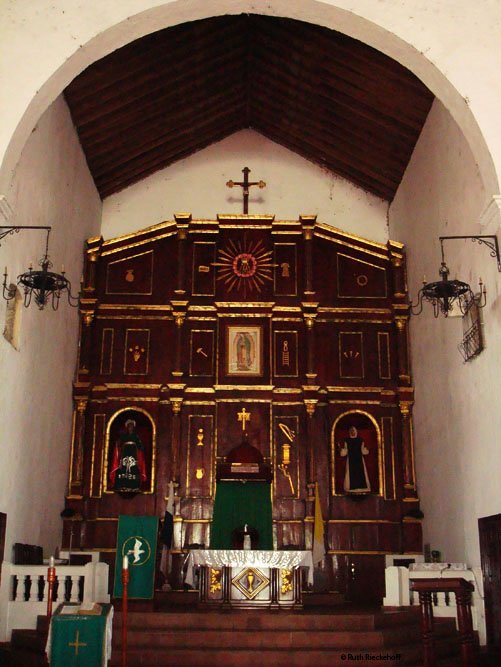


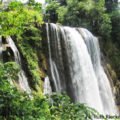

Wanderluster says
A beautiful spot, and you’ve provided a great history.
Ruth says
I am glad I was able to visit this place. it is remote but worth making the effort.
Wandering Educators says
i love hearing the story of a place – what an amazing, beautiful spot! i can’t blv those cannons are still there.
Ruth says
Incredible right!! My guide said the canons date from the latest reconstrction of the fort. Some other forts I have visited still have the canons but in a restored form (painted, etc.). This were natural.
Matt Hope says
Love the photo of the river, great view!
Ruth says
Thanks Matt. I appreciate your comment.
Lorna - the roamantics says
great photos ruth! happy to learn about you through tbex smc! looking forward to more 🙂
Ruth says
Glad to see you enjoyed the post.
Francesca says
Hey, I’ve been there! Totally forgot until I read this. Great piece with tons of great info!
Ruth says
Ha, ha. Glad to see you remember the place. You must have been there long time ago. I like when I see pictures and I recognize the place. I get a great feeling.